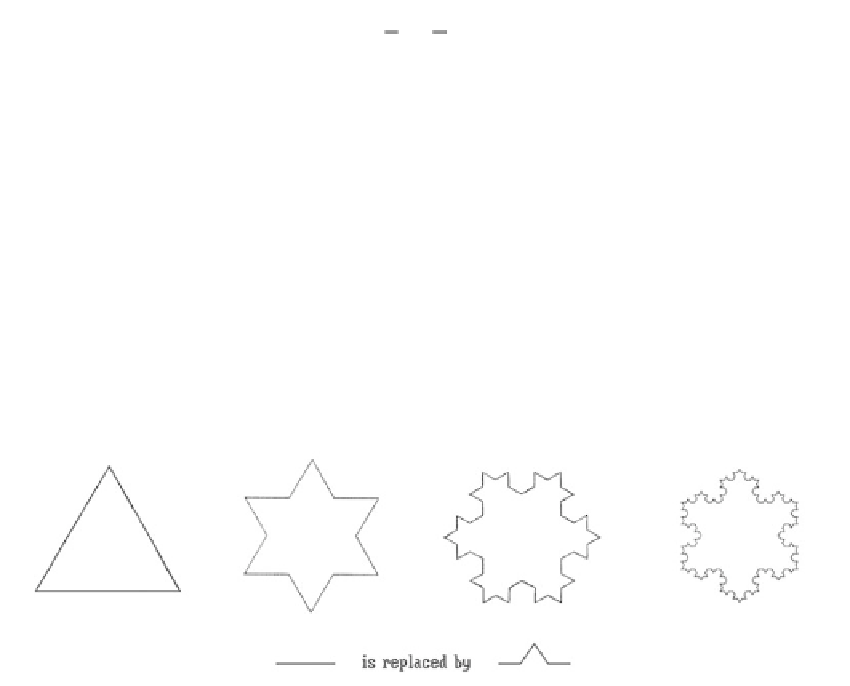Graphics Reference
In-Depth Information
more meaningful example, which shows the kind of reactions that mathematicians
encounter from nonmathematicians, has to do with the existence of continuous but
nowhere differentiable functions. A typical nonmathematics major would quickly put
this out of his/her mind as being totally irrelevant.
Here is how Mandelbrot defined a fractal.
Definition.
A
fractal
is a set whose Hausdorff-Besicovitch dimension is larger than
its topological dimension.
This definition is not totally satisfactory as even Mandelbrot pointed out. There
are spaces that have “fractal”-type properties that are not fractals. The definition has
therefore evolved into a more visual one, namely, that a fractal set should exhibit one
or more of the following: a complicated structure over a wide range of scales, self-
similarity (see Section 22.4), and/or have a noninteger type of dimension.
A well-known simple example of a fractal is the
triadic Koch curve
. See Figure
22.4. One starts with an equilateral triangle and successively replaces each straight
line segment of length e by four smaller segments, each of length e/3, as indicated in
the figure. If L(e) is the length of the curve when the length of each edge is e, then
one can show that this function satisfies the recurrence relation
e
4
3
Ê
Ë
ˆ
¯
()
.
L
=
Le
3
This leads to a solution L(e) = e
1-d
, where
log
log
4
3
d =
=
1 2618
.
and the logarithm is to any base. Rewriting L(e) as
()
=
-
d
Le
e e
,
we see that the term e
-d
can be thought of as the number of sides in the Koch curve
if one uses edges of length e. Since the only product
-
d
p
ee
Figure 22.4.
Four stages of the triadic Koch curve.



